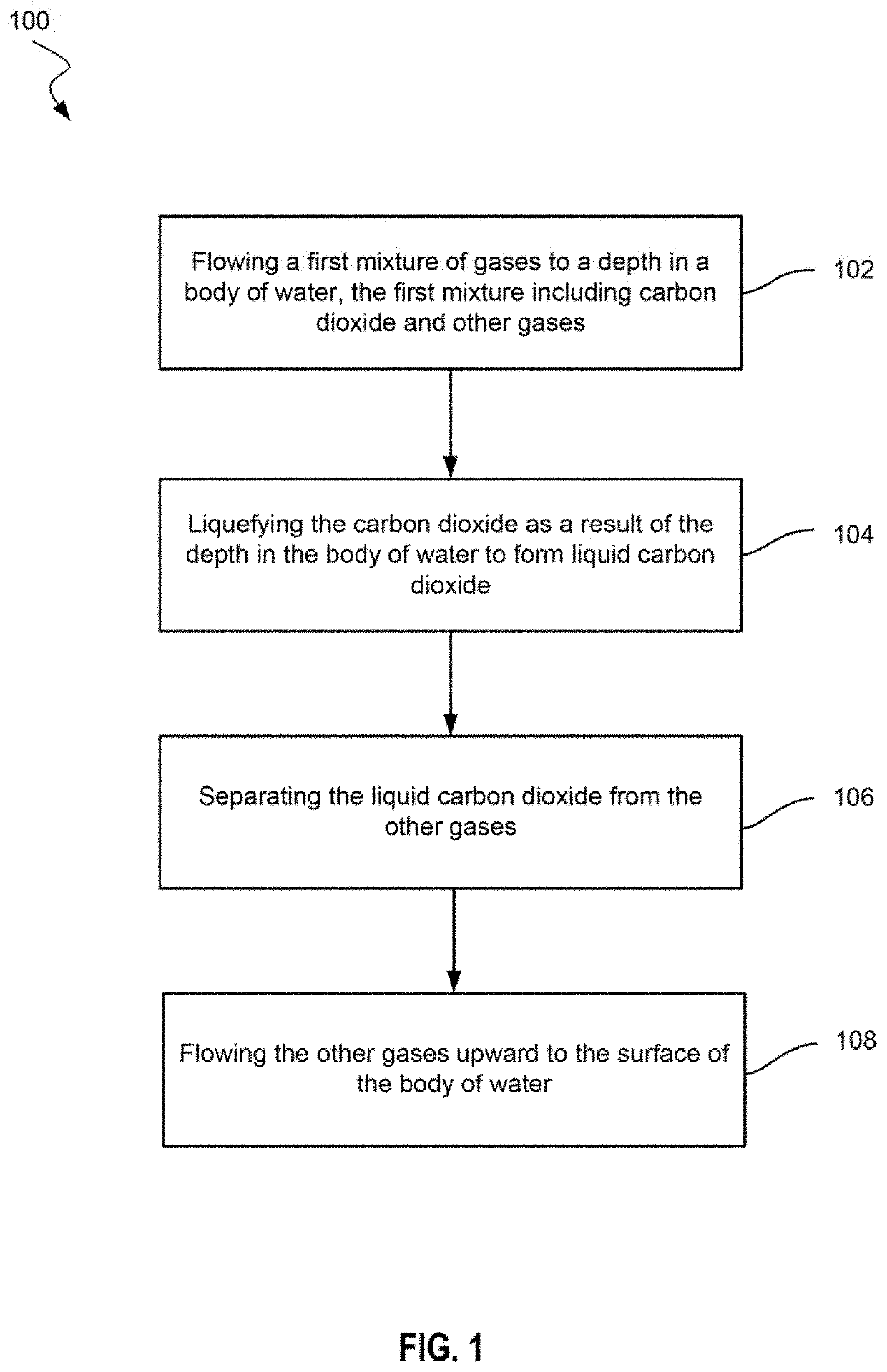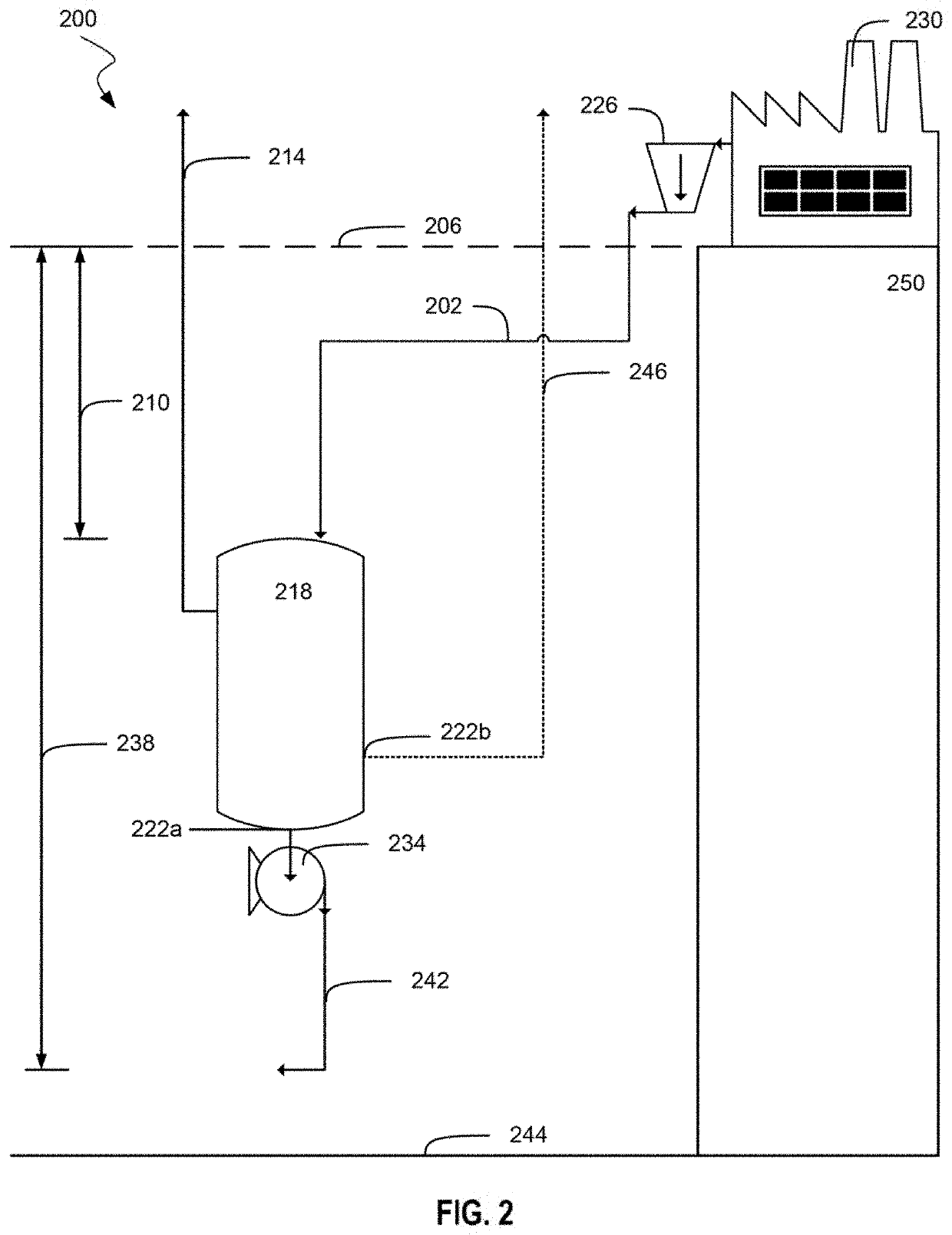Methods of separating carbon dioxide from flue gas and sequestering liquid carbon dioxide
a technology of carbon dioxide and flue gas, which is applied in the direction of liquefaction, lighting and heating apparatus, and separation processes, etc., can solve the problems of difficult geologic sequestration of carbon dioxide in the earth, difficult separation of carbon dioxide from other flue gases from industrial processes, etc., and achieves efficient sequestration and sequestration of carbon dioxide
- Summary
- Abstract
- Description
- Claims
- Application Information
AI Technical Summary
Benefits of technology
Problems solved by technology
Method used
Image
Examples
Embodiment Construction
[0012]Carbon dioxide, a greenhouse gas, is a byproduct of industrial processes, including refineries, fossil fuel power plants, chemical plants, and any other processes with hydrocarbon combustion. Sequestering the carbon dioxide is challenging. Carbon dioxide is generated with other flue gases and should be separated from the other flue gases before sequestration. Flue gases may include carbon dioxide, nitrogen, oxygen, and water vapor. Nitrogen may make up about 40 to 80% of the flue gas. Carbon dioxide may be about 3 to 50% of the flue gas. Water vapor may be removed from flue gas. Nitrogen oxides (NOx), sulfur oxides (SOx), carbon monoxide, and particulate matter may make up a small percentage of flue gas. Separation of carbon dioxide from other flue gases can be an expensive process.
[0013]Conventional sequestration of carbon dioxide can also be challenging. Storing carbon dioxide as a compressed gas or a liquid is preferred over storing carbon dioxide as an uncompressed gas bec...
PUM
| Property | Measurement | Unit |
|---|---|---|
| pressure | aaaaa | aaaaa |
| temperature | aaaaa | aaaaa |
| pressure | aaaaa | aaaaa |
Abstract
Description
Claims
Application Information
 Login to View More
Login to View More - R&D
- Intellectual Property
- Life Sciences
- Materials
- Tech Scout
- Unparalleled Data Quality
- Higher Quality Content
- 60% Fewer Hallucinations
Browse by: Latest US Patents, China's latest patents, Technical Efficacy Thesaurus, Application Domain, Technology Topic, Popular Technical Reports.
© 2025 PatSnap. All rights reserved.Legal|Privacy policy|Modern Slavery Act Transparency Statement|Sitemap|About US| Contact US: help@patsnap.com



